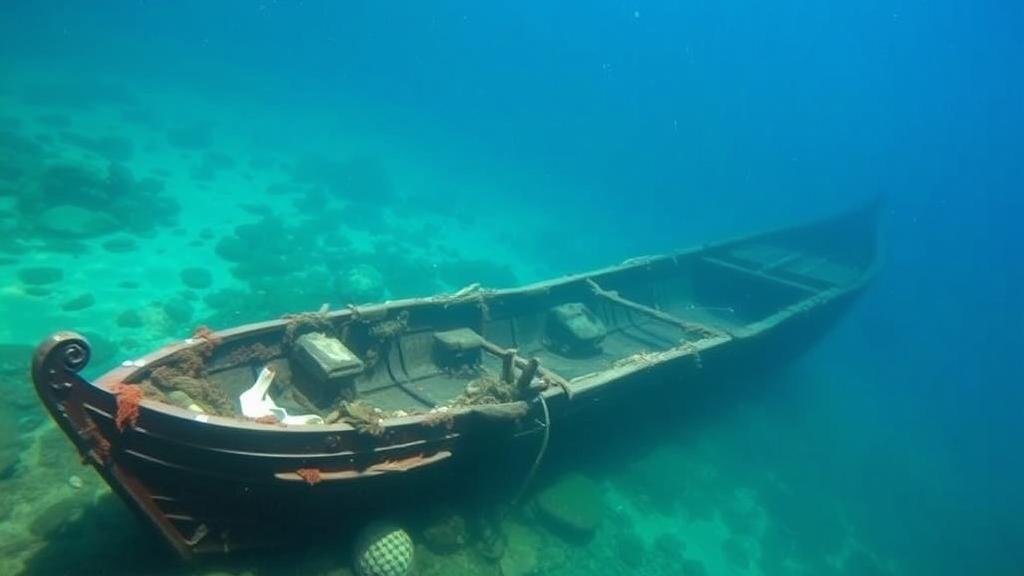How marine biodiversity studies intersect with the search for ancient shipwrecks.
The Intersection of Marine Biodiversity Studies and Ancient Shipwrecks
Marine biodiversity studies and the exploration of ancient shipwrecks may seem like two distinct fields; however, they intersect in fascinating ways. Both domains contribute to understanding our planets history, culture, and ecosystems. This article explores how marine biodiversity studies enhance the search for shipwrecks, helping not only to locate them but also to understand their environmental impacts.
The Importance of Marine Biodiversity
Marine biodiversity refers to the variety of life found in ocean ecosystems, ranging from the smallest microorganisms to the largest marine mammals. Ocean Agency estimated that over 230,000 marine species are documented, but a significant number remain undiscovered. Biodiversity is crucial for the health of oceanic environments, contributing to ecosystem resilience and stability.
Historical Context: Shipwrecks as Cultural Artifacts
Shipwrecks can offer a wealth of information about historical trade routes, maritime practices, and cultural exchanges. For example, the Nuestra Señora de Atocha, a Spanish galleon, sank near the Florida Keys in 1622, carrying vast treasures. Its discovery in 1985 by treasure hunter Mel Fisher not only unearthing artifacts but also provided insights into Spanish maritime history. Shipwrecks can also disclose evidence of biodiversity in their vicinity, including coral reefs that develop on wrecks over time.
Ecological Significance of Shipwrecks
Shipwrecks often become artificial reefs, providing habitat for various marine species. Encrusting organisms, such as barnacles and corals, settle on wrecks, which eventually attract larger marine life like fish and crustaceans. For example, the wreck of the USS Oriskany, sunk off the coast of Florida in 2006, has transformed into a thriving coral reef, supporting biodiversity and bolstering local fishing industries.
Utilizing Biodiversity Studies in the Search for Shipwrecks
Marine biodiversity studies can aid archaeologists and researchers in several significant ways:
- Mapping Biodiversity Hotspots: By studying areas rich in marine life, researchers can identify potential shipwreck sites. Areas abundant in coral reefs or schools of fish often indicate significant historical shipping routes which attract wrecks.
- Biochemical Indicators: The presence of certain organisms on or around a wreck can indicate its age and condition. For example, specific species of corals or sponges may only thrive in particular ecological conditions, aiding in the dating of a wreck.
- Remote Sensing and Monitoring: Technologies like underwater drones and sonar mapping utilize biodiversity data to visualize and locate wrecks. e methods can mitigate the environmental impacts of searching, ensuring that vital ecosystems remain intact during exploration.
Case Studies and Real-World Applications
One notable example of this intersection is the collaboration between marine biologists and archaeologists during the search for the HMS Challenger, which sank during a storm in 1878 near the coast of Georgia. Researchers analyzed the areas biodiversity to pinpoint areas where wreckage would likely accumulate, resulting in the discovery of artifacts that shed light on 19th-century naval history.
Also, studies conducted on the wrecks near the Great Barrier Reef have shown that many of these sites harbor unique marine ecosystems. The reefs monitoring projects often involve tracking the health of these ecosystems as they evolve around shipwrecks, illustrating a holistic approach to understanding marine history.
Challenges and Environmental Considerations
Despite the positive interactions between marine biodiversity studies and shipwreck explorations, challenges remain. Shipwrecks can potentially damage surrounding marine environments through physical disturbances and pollution. As such, researchers must balance the exploration of wrecks with environmental considerations. Strategies such as strict site management and the protection of biodiversity must be prioritized to ensure sustainable practices.
Conclusion: A Future of Integrated Research
The intersection of marine biodiversity studies and the search for ancient shipwrecks underscores the importance of interdisciplinary approaches in environmental science and archaeology. By embracing these connections, researchers can develop more effective strategies for studying our oceans rich history while promoting biodiversity conservation.
As the pursuit of knowledge in these fields continues to grow, the implications for both marine ecosystems and human history will deepen. Ongoing collaboration between marine scientists and archaeologists is essential to unlock the secrets held within the depths of our oceans.
Actionable Takeaway: For those interested in exploring this convergence, consider engaging with local marine conservation efforts or archaeological programs to gain hands-on experience and support sustainable practices in both domains.



